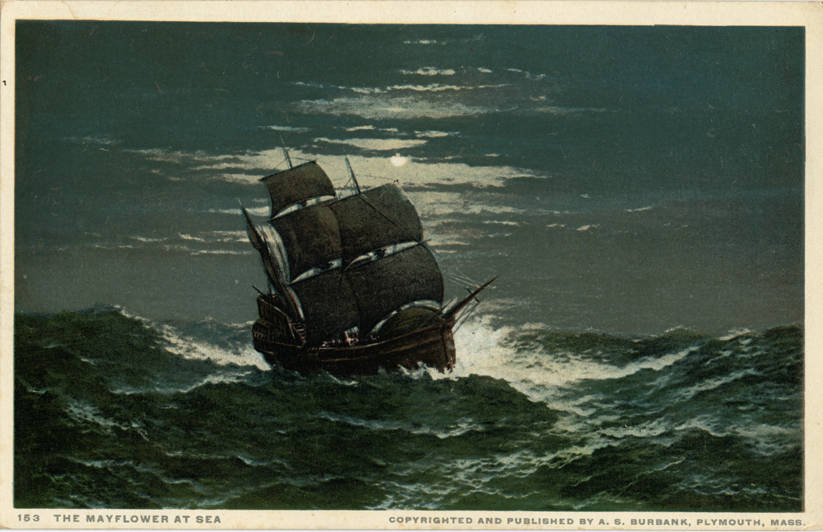On September 16, 1620, the Mayflower left England to begin its journey to America. Another vessel, the Speedwell, was meant to accompany it. After several leaks caused weeks of delays, though, the Speedwell clearly wasn’t seaworthy. Some of its passengers abandoned the expedition, and the rest boarded the Mayflower. Despite cramped conditions, dwindling supplies, and oncoming winter storms, 102 Pilgrims set out to cross the Atlantic. Their hope for a better future, for religious freedom and economic opportunities, was palpable in the face of such daunting challenges.
The journey of the Mayflower was made possible by the financial backing of the Merchant Adventurers, a group of 70 London businessmen. With the Pilgrims having very few resources of their own, the Merchant Adventurers saw America as a promising venture. They funded the Mayflower, its crew, and a year’s worth of supplies, with the expectation that the Pilgrims would establish a profitable colony and work for the company for seven years to repay the investment. This arrangement was seen as a sound business venture by the Merchant Adventurers based on the success of already established colonies.
The journey of the Mayflower was fraught with challenges. Originally bound for Northern Virginia, the ship was battered by storms and rough seas, which not only slowed the voyage but also damaged the ship. The passengers, already overcrowded, were further tested by the spread of a contagious disease that claimed the lives of almost half of them. With the winter seas forcing the Mayflower to land at Cape Cod, Massachusetts, on November 19, 1620, the Pilgrims found themselves in a dire situation. With supplies already low and winter in full swing, they made the decision to settle in nearby Plymouth, thus founding the first permanent European settlement in the New World.

